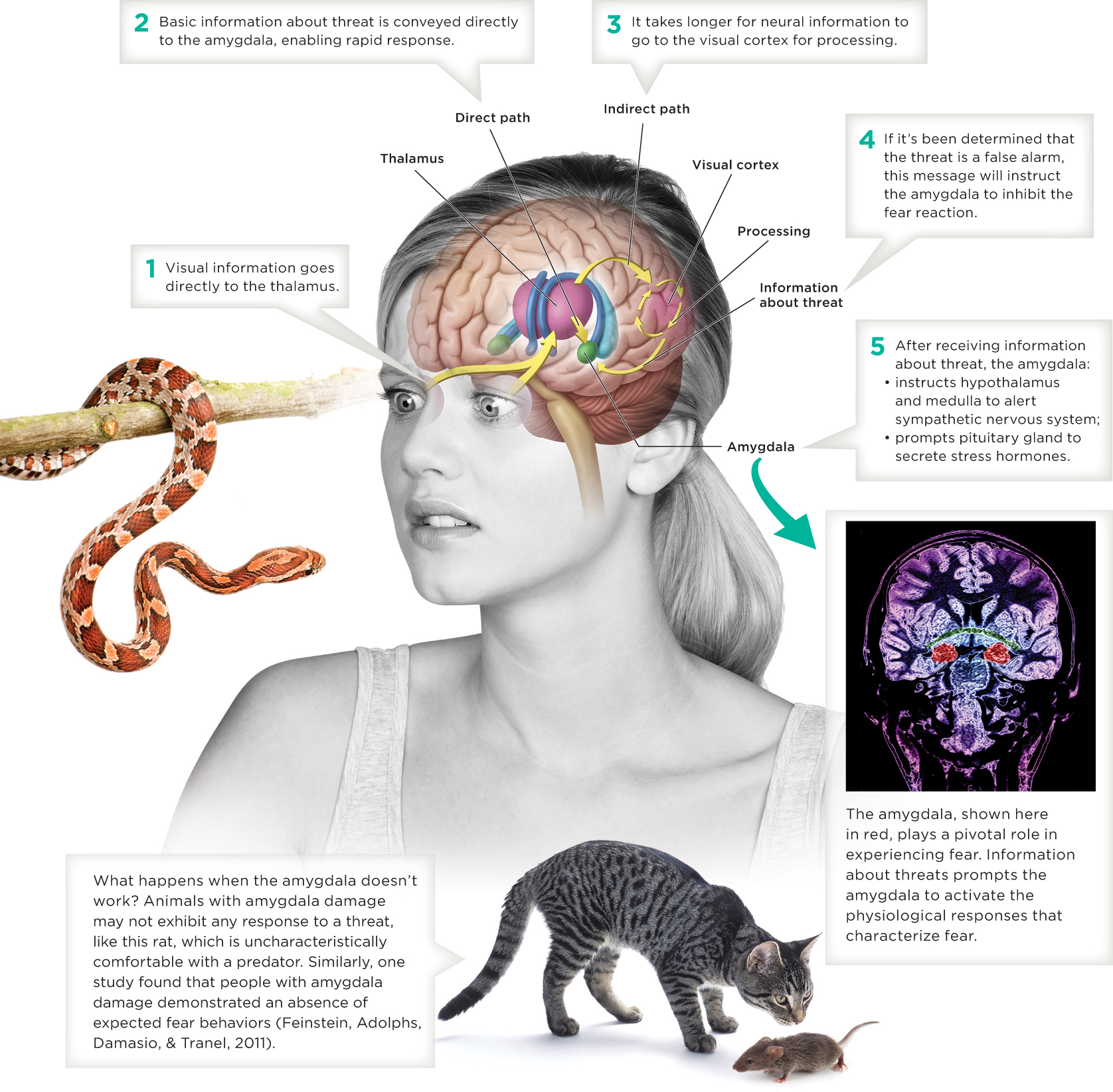INFOGRAPHIC 9.4: The Anatomy of Fear
You instantly recoil when you spot a snake—then sigh with relief just a moment later when it registers that the snake is a rubber toy. Have you ever wondered why you react with fear when a “threat” turns out to be nothing? Why does it take longer for you to process a threat than react to it? Sensory information (sight, sound) entering the brain travels to the thalamus and is then routed to the cortex for processing. Sensory information can also go directly to the amygdala. In the case of a threat, the amygdala alerts other areas of the brain and the endocrine system instantly without waiting for a conscious command. This enables a response to fear before you are even fully aware of what you are reacting to.

Credits: T1 weighted MRI image of the brain demonstrates normal cerebral anatom, Living Art Enterprises/Science Source; Woman looking at pregnancy test, Brand New Images/Getty Images; Snake, Eric Isselee/Shutterstock; Small mouse, Sergii Figurnyi/Shutterstock; Cat with mouse, © Kitchin & Hurst/Agefotostock
[Leave] [Close]